Best of Bike Delaware 2014: “Why ‘Share The Road’ Is Gone in Delaware”
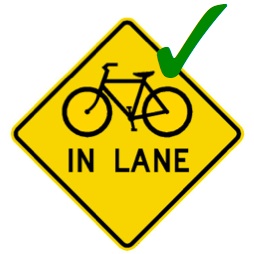
2014 Look Back: This article was originally published on April 4, 2014. It was the most viewed Bike Delaware article of 2014.
Published in the Institute of Transportation Engineers Bicycle and Pedestrian Council Newsletter
April 4, 2014
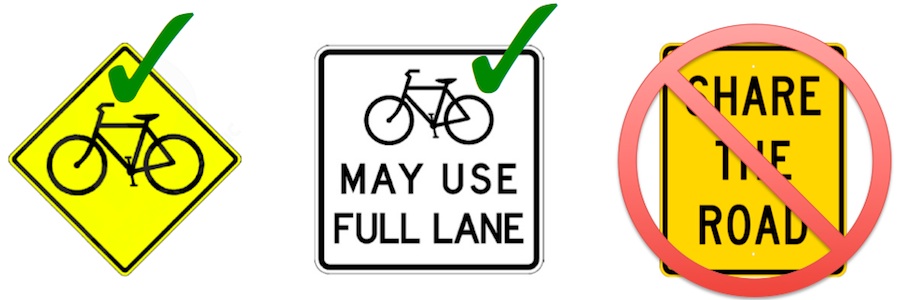
“Share The Road”: It’s practically the national motto of cycling advocacy in the United States.
It’s the cycling “message” on license plates in Colorado, Florida, Georgia, Illinois, Indiana, Iowa, Kentucky, Louisiana, Maryland, Mississippi, North Carolina, South Carolina, Ohio, Oregon, Texas, Utah, Washington, and Wisconsin.
But not in Delaware. In fact, as of last November, just the opposite.
In November, the Delaware Department of Transportation announced that, effective immediately, Delaware would stop using the MUTCD-approved “Share The Road” plaque (W16-1P). More, the department would also start removing all “Share The Road” signs currently installed in Delaware.
How did the state’s cycling advocacy group Bike Delaware react to the announcement that Delaware’s department of transportation was abandoning “Share The Road?” Were there howls of outrage and a letter writing campaign to protest? Actually, Bike Delaware just said “Goodbye ‘Share The Road’“.
Despite its ubiquity and apparent iconic status, it turned out that “Share The Road” is actually an example of common ground between traffic engineers and cycling advocates. We both hated it and for the same reason: its unresolvable ambiguity.
For traffic engineers, with our many years of experience with traffic control devices, “Share The Road” is yet another example of “feel good” signage that placates an interest group but has no safety benefit and adds useless and distracting clutter to the visual landscape.
For cyclists in Delaware (and elsewhere), “Share The Road” had long been interpreted as a sign primarily directed at motorists. Cyclists thought it meant something like “Motorists: be cool.” But for many motorists, “Share The Road” is often interpreted as a sign primarily directed at cyclists and meant something more like “Bicyclists: don’t slow me down.” But we finally realized (after years of pointless yelling back and forth between cyclists and motorists, both yelling “Share The Road” at each other!), that “Share The Road” not only doesn’t help, it actually contributes to conflict and confusion.
“Bicycle May Use Full Lane”
In Delaware, our important task now is to figure out the warrant for the “Bicycle May Use Full Lane” sign.
Perhaps the biggest point of conflict between motorists and cyclists is when cyclists “take the lane” (e.g. cycle in the middle of a travel lane on narrow two lane roads with double yellow lines and without any shoulders). This can sometimes make motorists traveling behind angry. But there is a solid reason that cyclists sometimes ride like this.
Riding at the right hand edge of a travel lane is an invitation for cars behind to pass. That’s fine. But where a double yellow line also exists, it is very easy for a motorist to interpret the combination of the cyclist at the right hand edge of the lane and the double yellow line separating her lane from the lane of oncoming traffic as an invitation to pass in the travel lane. But on roads where the travel lanes are only 10 or 11 feet, this is a potentially catastrophic misunderstanding. The only way for a motorist to safely pass a cyclist when the travel lane is that narrow is to (at least partially) exit her travel lane (into the lane of oncoming traffic).
This type of situation is an example of where the Bicycle May Use Full Lane (and shared lane pavement markings) can both help. The sign delivers a clear traffic control message that makes an ambiguous and confusing traffic situation clearer – for both motorists and cyclists. It’s a big, big improvement over that other sign…what was it called again?
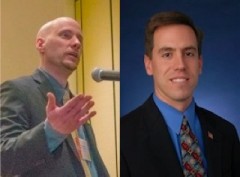
James Wilson is the executive director of Bike Delaware.
Mark Luszcz is the chief traffic engineer of the Delaware Department of Transportation.
RELATED:
• Here They Come (“Bicycles May Use Full Lane” signs in Newark)
• Delaware Cyclist Ticketed for Riding His Bike Is Arraigned



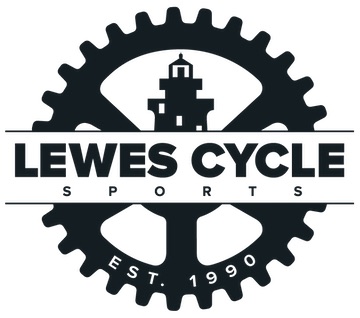

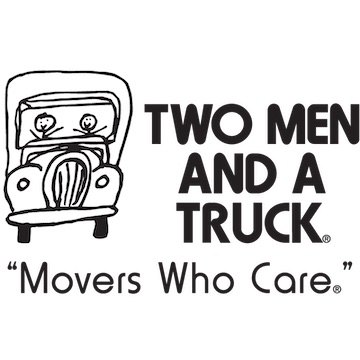
2 Responses
It’s not gone. I’ve seen a couple of them around.
There is no program to remove existing signs so they will linger for many years before they disappear completely.